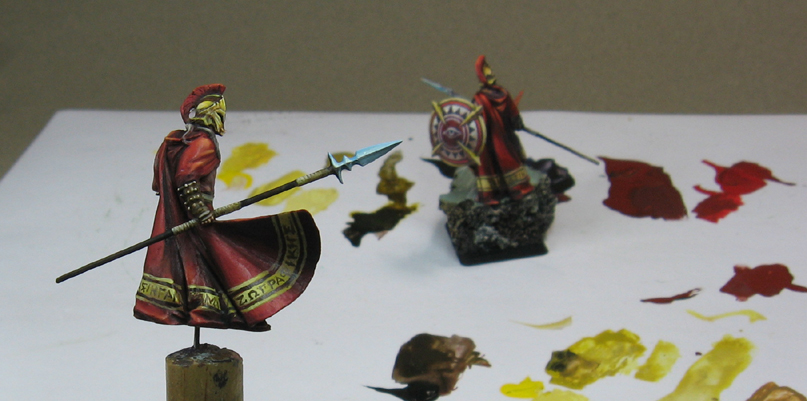Everybody's favorite... freehand cloaks! Oh, and a shield, and some tattoos for good measure :-)
I tried to spend as much time as I could on all the 'preliminary' work, such as the design sketches and such things.
By the way, that is Greek for The Painting Pyramid.
Time to see what this will look like in color!
So, a color sketch to better work out the design, and plan ahead.
It is really handy to have a guide like this right next to the piece you will be working on. Cathy gave me the idea for that!
Time to lay out the design on the cloak...
And the back as well.
Lettering! My favorite, since I am a 'closet calligrapher'. At least that is what I have been told.
The design quickly shaded...
And then placed on the base.
Don't forget the shield!
I got your back!
A box from Germany made the Taters think that a new spaceship had arrived.






















